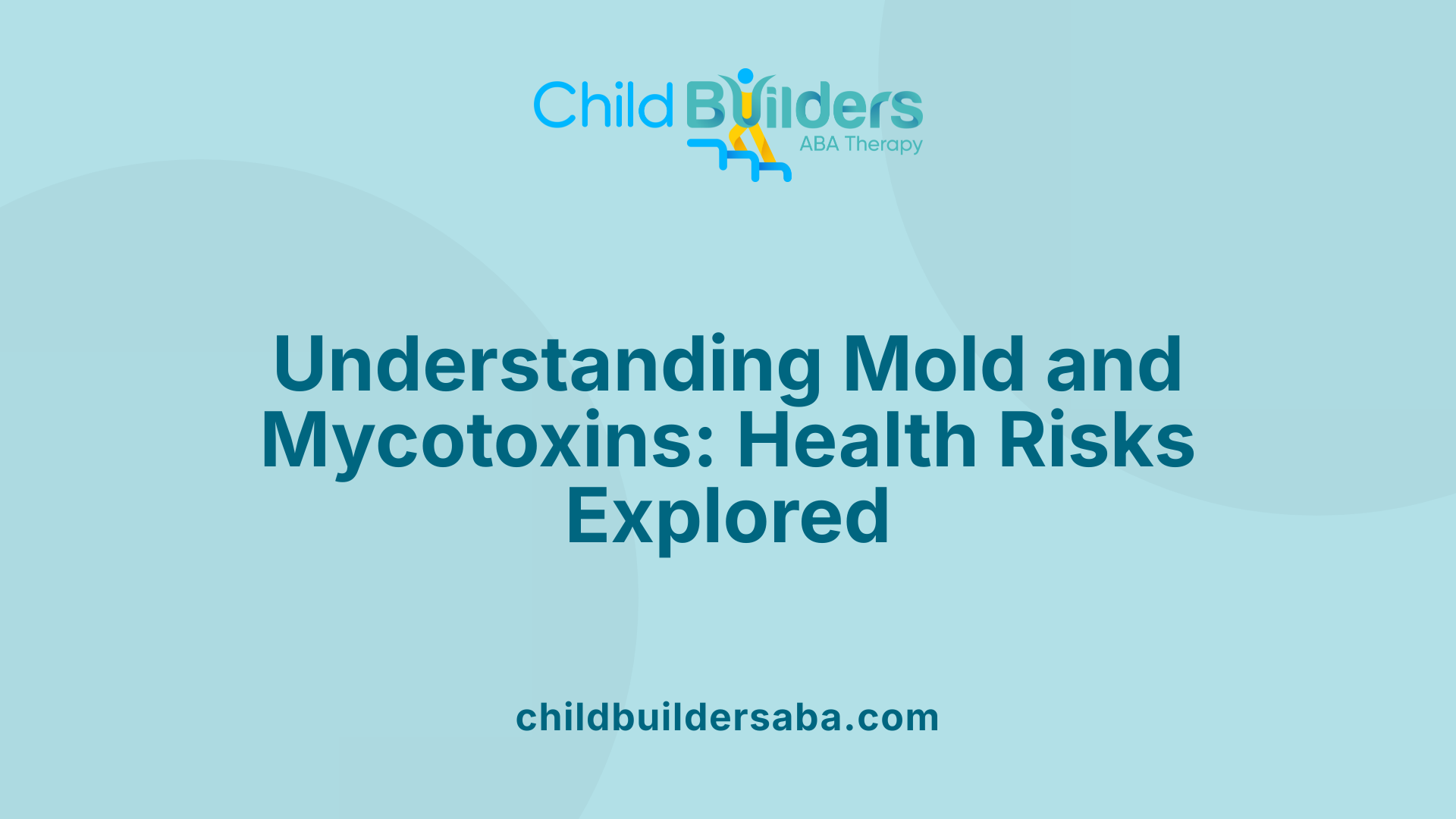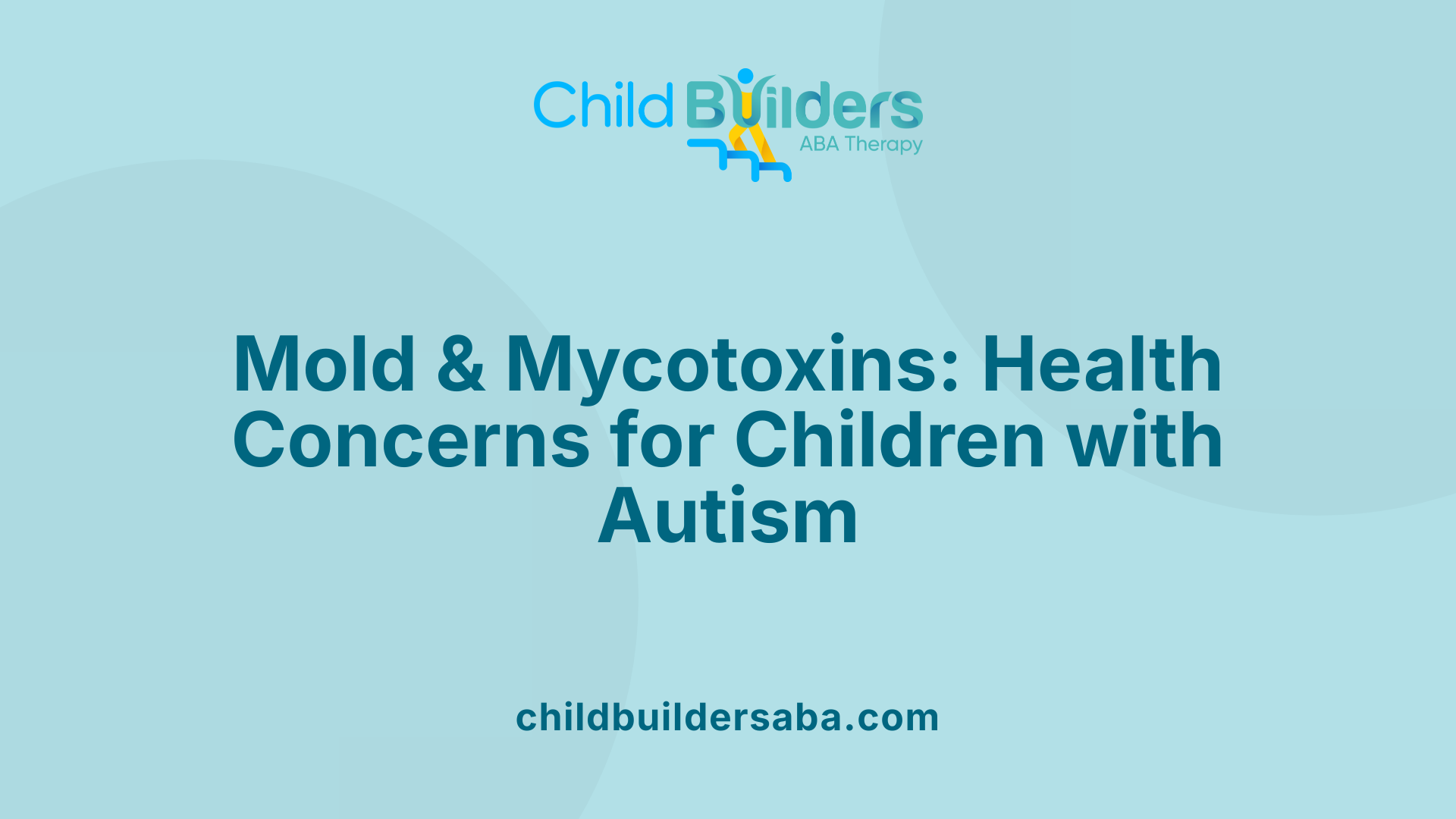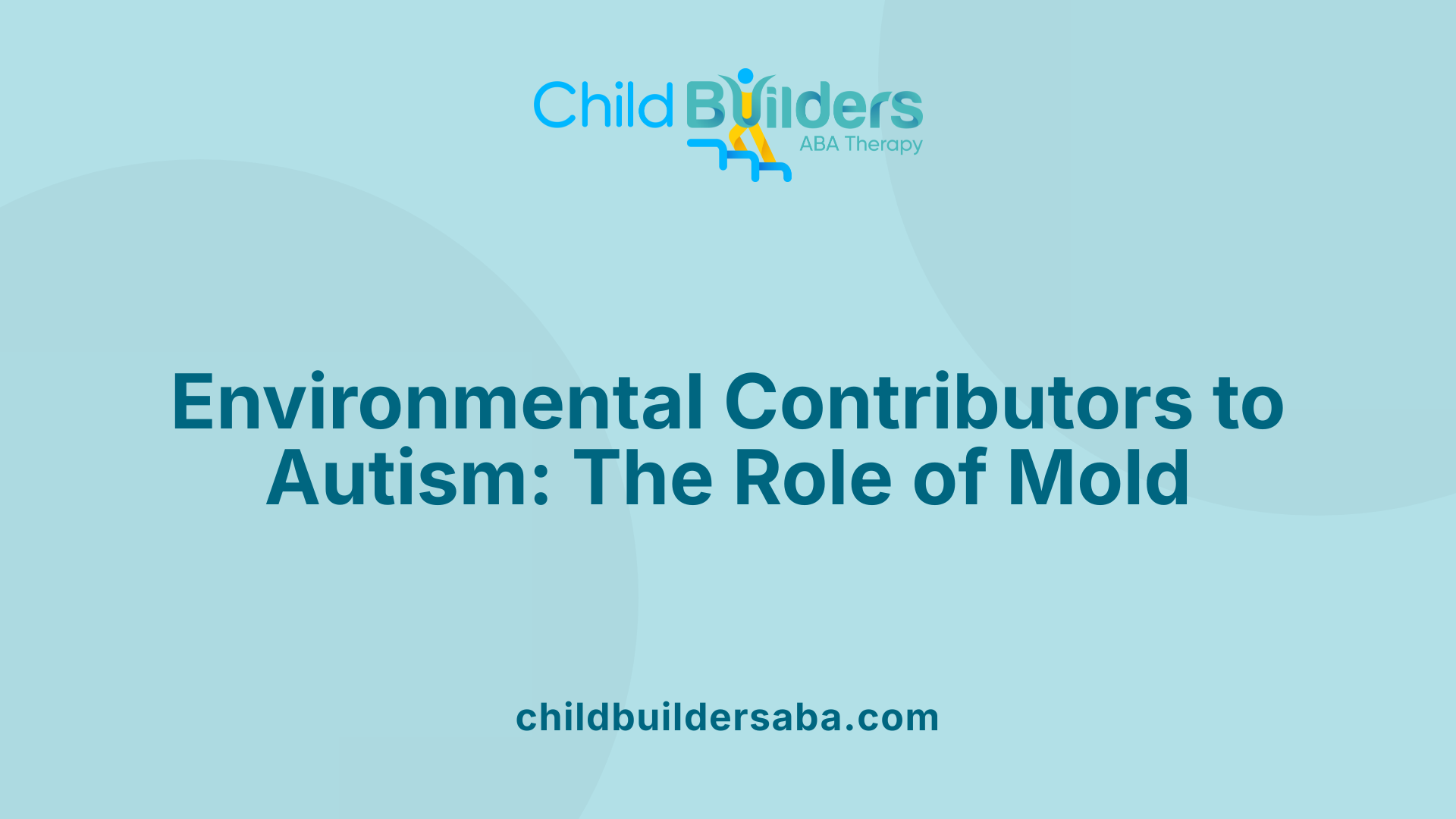Does Mold Cause Autism?

Exploring Environmental Influences on Neurodevelopment
The quest to understand autism spectrum disorder (ASD) involves examining a myriad of factors—from genetics to environmental influences. Among these, mold exposure has garnered attention due to its potential impact on neurodevelopment and behavior. While current research has yet to establish a direct causal relationship, emerging evidence suggests that mold and its toxins may influence autism symptoms and neurodevelopment through complex biological mechanisms. This article delves into what is known about mold's role, the health effects of exposure, and the scientific landscape exploring its connection to autism.
The Complexity of Autism Causes
What are the known causes of autism?
Autism Spectrum Disorder (ASD) is a complex condition influenced by a wide range of factors. Among these, genetic factors play a significant role. Certain genetic conditions, such as chromosomal abnormalities, have been linked to increased risk of autism. A family history of autism can also raise the likelihood of occurrence.
Beyond genetics, biological differences in brain development are thought to contribute to ASD. Variations in brain structure and connectivity may influence how individuals with autism process information and interact socially.
Environmental factors during prenatal and early childhood stages are also under investigation. These include complications during birth, exposure to toxins, or other stimuli before and after birth.
While research continues, no single cause has been pinpointed. Most experts agree that autism results from a complex interaction between genetic predispositions, biological variations, and environmental influences.
Understanding Mold and Mycotoxins

What is mold and how does it affect health?
Mold is a type of fungus that grows on organic materials, especially in damp or decaying environments. It reproduces by releasing spores into the air, which can be inhaled or come into contact with skin. Mold thrives on moisture, making areas with water damage prime spots for growth.
How do mold and mycotoxins relate?
Mold produces substances known as mycotoxins, which are toxic compounds that can pose health risks. These toxins are produced especially when mold feels threatened or under stress, such as during mold infestations. Mycotoxins can contaminate surfaces, dust, and even air, contributing to indoor pollution.
Conditions that promote mold growth
Certain environments significantly increase the chance of mold proliferation:
- High humidity levels (above 60%)
- Water leaks and water damage
- Poor ventilation in homes and buildings
- Organic materials like wood, paper, or fabrics that stay damp
Control of these conditions through moisture reduction and proper ventilation helps prevent mold growth.
Detecting Mold in Home Environments
How is mold exposure tested in children?
Testing for mold exposure in children involves both environmental and biological assessments to identify potential sources of mold and their effects.
Environmental testing methods include:
- ERMI dust tests: These analyze household dust samples for mold DNA, providing insight into the overall mold burden in the home.
- Spore trap or air tests: These measure the concentration of mold spores suspended in the air, giving a real-time snapshot of airborne mold levels.
- Tape testing: This involves sticking tape to surfaces to collect mold samples, which are then microscopically examined to determine mold species present.
Biological testing focuses on determining whether the child has been affected by mold or mycotoxins. Common tests include:
- Skin prick (scratch) tests or blood (IgE) tests: These assess for allergies to mold, including black mold (Stachybotrys). They can help identify if mold allergies are contributing to respiratory issues.
It is essential that healthcare professionals guide the testing process. While testing can help identify mold sensitivities or exposure, the primary approach to managing mold-related health issues often involves addressing the environmental sources of mold and reducing exposure.
Professional environmental assessments are preferred because they involve comprehensive sampling and interpretation by trained specialists. Home testing kits may be less accurate or harder to interpret without expertise.
Overall, a combination of environmental testing and clinical evaluations provides a thorough understanding of mold exposure risks in children.
Health Concerns of Mold and Mycotoxin Exposure in Autism

What are the potential health effects of mold and mycotoxin exposure related to autism?
Exposure to mold and its toxins, known as mycotoxins, can have various impacts on health, especially in children with autism spectrum disorder (ASD). Mold is a fungus that grows on wet, decaying organic matter, while mycotoxins are harmful substances it produces under threat.
Mold colonization can occur in the gut, sinuses, and lungs, leading to immune stress and activation of mast cells. This immune activation can worsen symptoms related to autism by causing inflammation and behavioral fluctuations. Furthermore, mold exposure may result in allergy symptoms, fatigue, brain fog, and immune system issues, all of which could compound autism-related challenges.
Mycotoxins are particularly concerning because they are neurotoxic. They can cause neurological damage, impair mitochondrial function, and deplete energy, all of which are critical in neurodevelopment, especially in children. These toxins can also cause inflammation and toxicity in organs such as the liver and kidneys.
Some research indicates that exposure to these fungal toxins may exacerbate autism behaviors or increase the severity of symptoms. However, current scientific evidence is not definitive. Studies show that a small percentage of children with ASD have detectable levels of mycotoxins in their urine, but there’s no clear link established yet.
Reducing exposure through proper detection and remediation of mold in the environment is crucial. When mold or water damage is found at home, professionals advise containment and removal of damaged materials rather than chemical spraying or opening walls. Remediation is vital because persistent mold exposure can sustain or worsen health issues.
Addressing mold and mycotoxin exposure, alongside other therapies, may help improve outcomes for some children. Detoxification and improving immune resilience are also parts of a comprehensive approach. While evidence continues to evolve, minimizing mold exposure remains a sensible step for children with autism and their families.
Can Mold Cause Symptoms Mimicking Autism?

Can mold cause symptoms similar to autism, such as developmental delays?
Yes, exposure to mold can produce symptoms that resemble those seen in autism spectrum disorder (ASD). Research has shown that children living in environments with significant mold contamination may experience developmental delays and neurological issues. Mold releases mycotoxins—harmful toxins like ochratoxin and others—that can affect the nervous system.
Mycotoxins may contribute to immune system stress, cause brain fog, fatigue, and behavioral fluctuations, all of which can overlap with autism-related symptoms. In children with impaired detoxification pathways, mold exposure can worsen neurological and developmental signs, potentially lowering IQ scores and delaying milestones.
Testing for mold colonization often involves environmental assessments like ERMI dust tests or spore trap air tests, usually conducted by professionals. If mold is detected, removing mold from the environment and addressing mycotoxin exposure tend to improve symptoms.
While mold itself is not considered a cause of autism, it can mimic or exacerbate certain developmental and behavioral issues. Recognizing mold exposure as a contributing factor allows for targeted remediation and medical interventions, which may lead to improved neurological outcomes in affected children.
Environmental Factors and Autism Risk—Where Does Mold Fit In?

Overview of Environmental Contributors
Research into autism spectrum disorder (ASD) highlights various environmental influences that may contribute to its development. These include exposure to heavy metals, pesticides, industrial chemicals, and pollutants. Such substances, especially when encountered during pregnancy or early childhood, are associated with increased autism risk. The environment interacts with genetic factors, potentially affecting neurodevelopmental outcomes.
Research Status on Mold and Neurodevelopment
The link between mold exposure and autism remains an area of ongoing investigation. Mold, a common fungus that grows on damp organic matter, produces mycotoxins which have been shown to cause neurological and immune system harm in certain contexts. Some environmental health studies suggest that mold and its toxins could influence behavior and developmental outcomes, especially in children with immune vulnerabilities. However, current evidence from scientific studies, including recent urine biomarker research, does not establish a direct connection between mold exposure and ASD.
Interactions with Other Toxins and Genetic Predispositions
Mold and mycotoxins may interact with other environmental toxins such as heavy metals, pesticides, and chemicals, potentially amplifying adverse effects. Children with genetic predispositions or immune dysfunctions might also be more sensitive to these exposures. While some studies report detection of specific mycotoxins in urine samples of children with or without autism, findings have not shown a consistent or significant difference. Overall, the picture suggests that mold is one of many factors that could influence neurodevelopment, but its exact role remains less defined than other environmental hazards.
| Factor | Current Evidence | Impact on Autism Risk |
|---|---|---|
| Heavy metals | Strongly linked via multiple studies | Increased risk with prenatal and early exposure |
| Pesticides | Associated in some epidemiological studies | Possible developmental effects |
| Industrial chemicals | Less conclusive, ongoing research | Potential influence in susceptible children |
| Mold and mycotoxins | Limited evidence, recent biomarker studies | No definitive link, but immune and neurological concerns remain |
Understanding how environmental factors contribute to autism involves considering combined exposures and individual susceptibility. Continued research, especially using advanced testing methods, is essential to clarify mold’s role in neurodevelopmental disorders.
Scientific Evidence and Ongoing Research on Mold and Autism
What does current research say about the link between mold exposure and autism?
Research into the connection between mold exposure and autism spectrum disorder (ASD) is ongoing, and while a direct cause-and-effect relationship has not been firmly established, current findings suggest possible influences on neurodevelopment.
Some studies indicate that exposure to mold can activate the immune system, leading to increased production of inflammatory markers such as cytokines and antibodies targeting neural tissues. This immune activation has the potential to affect brain development, especially during critical early life stages.
Furthermore, research on propionic acid (PPA), a metabolite associated with mold-contaminated foods and environments, shows that high concentrations of PPA can impair neuronal development and disrupt neural circuits. This disruption might contribute to behaviors characteristic of autism at a molecular level.
Case reports have documented improvements in children’s behavior and developmental progress after removing them from mold-contaminated settings, hinting at a possible environmental influence.
While these studies highlight potential mechanisms through which mold could impact neurodevelopment—such as immune activation and neuroinflammation—they do not confirm mold as a direct cause of autism. Instead, they emphasize the importance of further investigation.
Ongoing research, including studies measuring mycotoxins in children's urine, aims to better understand exposure levels and health effects. For example, a recent study detected certain mycotoxins in a subset of children but found no direct statistical association with ASD, suggesting that additional factors and more sensitive detection methods are needed.
In conclusion, current scientific evidence points to a complex relationship where mold exposure may influence autism-related outcomes through immune responses and neuroinflammatory processes. Still, more comprehensive research is necessary to clarify these connections and inform safe environmental practices.
Biological Pathways: How Mold and Mycotoxins Might Influence Neurodevelopment
How might mold or mycotoxins biologically influence neurodevelopment or autism symptoms?
Mold and their mycotoxins can impact neurodevelopment through multiple biological pathways, primarily involving immune responses that lead to neuroinflammation. When mold spores or mycotoxins are inhaled, ingested, or absorbed through the skin, they can trigger the immune system to release pro-inflammatory cytokines, such as histamines from mast cells. This immune activation causes neuroinflammation, which can influence brain development and function.
Mycotoxins are also directly neurotoxic. They have the potential to damage brain cells and impair mitochondria, the energy-producing structures within cells. Energy depletion in brain cells can disrupt the development of neural pathways and synapses, essential for cognitive and behavioral functions.
Children with autism often have impaired detoxification pathways, making them more susceptible to the harmful effects of mold and mycotoxins. These children may struggle to eliminate toxins efficiently, leading to increased vulnerability to neurological impacts.
Research suggests that mold exposure might contribute to behavioral fluctuations seen in autistic children. The toxins may interfere with the immune system, causing dysfunction that affects brain development and possibly exacerbates autism symptoms.
Overall, the biological effects of mold and mycotoxins on neurodevelopment involve complex interactions between immune activation, direct neural toxicity, and mitochondrial impairment. Continuing research aims to clarify these pathways further, especially to understand how they may contribute to or worsen autism spectrum disorder symptoms.
Moving Forward with Awareness and Action
While current scientific evidence does not confirm that mold causes autism, there is a growing understanding of how mold and mycotoxins could influence neurodevelopmental symptoms. The potential for mold to contribute to immune activation, neuroinflammation, and neurological impairments warrants careful consideration, especially for vulnerable populations. Ensuring thorough mold detection, remediation, and supportive detoxification can be beneficial, particularly for children with existing sensitivities or genetic predispositions. Continued research is essential to clarify these associations and develop effective prevention and intervention strategies, making mold exposure awareness a vital component of holistic autism management.
References
- Mold and Mycotoxins - The Autism Community in Action
- No Association between Mycotoxin Exposure and Autism: A Pilot ...
- Mold and Mycotoxins - The Autism Community in Action
- Effects of Mycotoxins on Neuropsychiatric Symptoms and Immune ...
- Mycotoxin Exposure and Autism: A Systematic Review of ... - PubMed
- Effects of Mycotoxins on Neuropsychiatric Symptoms and Immune ...
- Mold and Mycotoxins - The Autism Community in Action
- Rapid Complete Recovery From An Autism Spectrum Disorder After ...






.jpg)






























































































